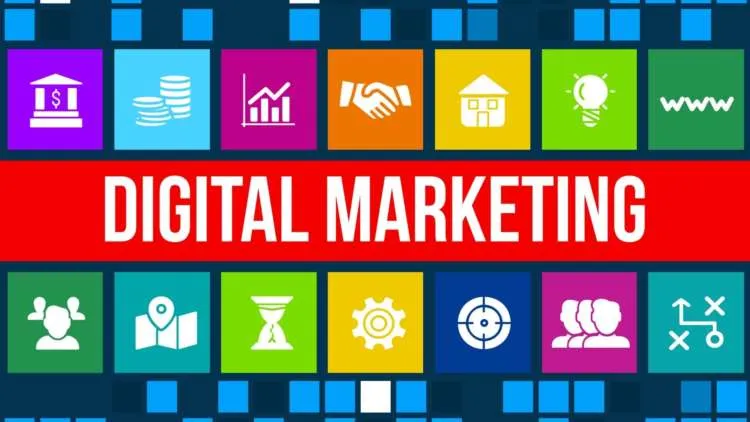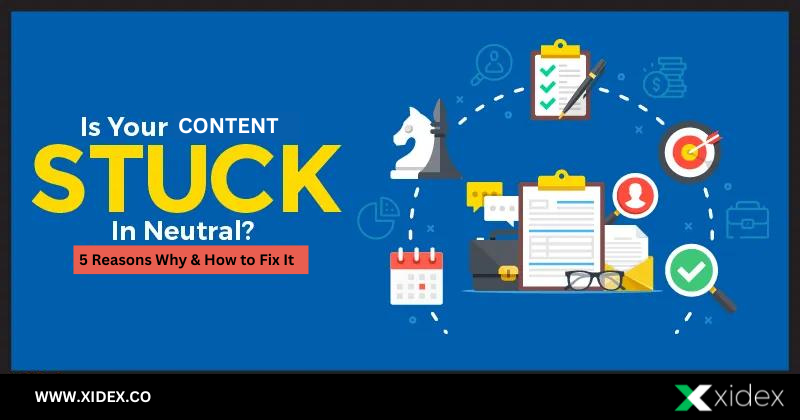In today’s hyper-connected world, businesses of all sizes are striving to carve their niche in the digital landscape. And what better tool than digital marketing to navigate this vast, dynamic space? Whether you’re a seasoned entrepreneur or just starting out, understanding the intricacies of digital marketing is crucial for success. So, buckle up, because we’re about to embark on a comprehensive journey through this multifaceted realm.
What is Digital Marketing?
At its core, digital marketing encompasses all marketing efforts utilizing electronic devices and the internet to reach and engage your target audience. This umbrella term shelters a myriad of strategies, spanning across:
- Websites and Blogs: Your website acts as your digital storefront, while informative blogs attract organic traffic and establish thought leadership.
- Search Engine Optimization (SEO): Optimize your website and content to rank higher in search engine results, increasing organic visibility.
- Pay-Per-Click (PPC) Advertising: Run targeted ads on search engines and social media platforms to drive immediate traffic and leads.
- Social Media Marketing: Engage with your audience, build brand awareness, and foster community through platforms like Facebook, Instagram, and Twitter.
- Content Marketing: Create valuable, informative content (articles, videos, infographics) to attract, educate, and convert potential customers.
- Email Marketing: Nurture leads, build relationships, and promote offers through targeted email campaigns.
- Mobile Marketing: Reach your audience on their mobile devices through SMS marketing, mobile apps, and responsive website design.
- Affiliate Marketing: Partner with other websites or influencers to promote your products or services in exchange for a commission.
- Video Marketing: Capture attention and tell compelling stories using engaging video content.
Benefits of Digital Marketing:
The advantages of embracing digital marketing are numerous:
- Global Reach: Access a wider audience compared to traditional marketing methods, transcending geographical barriers.
- Cost-Effectiveness: Often more affordable than traditional methods, allowing for flexible campaign budgets and targeted spending.
- Measurable Results: Track your campaign performance in real-time, gaining valuable insights for optimization and improvement.
- Personalization: Tailor your message to specific audience segments, delivering relevant and engaging content.
- 24/7 Engagement: Connect with your audience anytime, anywhere, fostering ongoing communication and building stronger relationships.
Getting Started with Digital Marketing:
Now that you’re equipped with the fundamentals, let’s explore some practical steps to initiate your digital marketing journey:
- Define Your Goals: What do you aim to achieve? Brand awareness, increased website traffic, lead generation, or sales? Clear objectives guide your strategy.
- Know Your Audience: Who are you targeting? Understanding their demographics, interests, and online behavior is key to crafting relevant content.
- Choose Your Channels: Select the platforms where your target audience spends their time (e.g., Facebook for millennials, LinkedIn for professionals).
- Develop a Content Strategy: Create valuable, engaging content that resonates with your audience and aligns with your goals.
- Optimize for Search Engines: Implement SEO best practices to improve your website’s visibility in search results.
- Run Targeted Ads: Experiment with PPC advertising to reach specific audience segments and drive immediate action.
- Leverage Social Media: Actively engage with your audience, share valuable content, and run targeted social media campaigns.
- Track and Analyze: Monitor your campaigns, analyze results, and adapt your strategies based on data-driven insights.
Beyond the Basics:
As you delve deeper into the world of digital marketing, a few key considerations emerge:
- Staying Ahead of the Curve: The digital landscape constantly evolves. Stay informed about emerging trends and adapt your strategies accordingly.
- Data-Driven Decisions: Leverage data analytics to understand your audience, assess campaign performance, and make informed decisions.
- Personalization is Key: Tailor your messages and content to individual audience segments for greater engagement and conversion.
- Omnichannel Marketing: Integrate your digital marketing efforts with other channels (e.g., offline events) for a cohesive brand experience.
- Embrace Automation: Utilize marketing automation tools to streamline repetitive tasks and personalize communication workflows.
- Security and Privacy: Protect your customers’ data and comply with relevant regulations to build trust and maintain credibility.
Digital marketing is an ever-evolving landscape, but the core principles remain constant: understand your audience, create valuable content, and leverage the right channels to connect and engage effectively. Remember, success lies in ongoing experimentation, data-driven analysis, and a willingness to adapt. So, embark on your digital marketing journey with confidence, embrace continuous learning, and watch your brand thrive in the online world.
Deep Dives: Exploring Specific Digital Marketing Strategies (Continued)
While the previous section provided a roadmap to get you started, the true power of digital marketing lies in its diverse array of specialized strategies. Let’s delve into some key tactics to fuel your marketing engine:
SEO Demystified:
Search engine optimization (SEO) helps your website rank higher in search results, increasing organic traffic and brand visibility. Mastering this requires:
- Keyword Research: Identify relevant keywords your target audience searches for, using tools like Google Keyword Planner.
- On-Page Optimization: Optimize your website content (titles, meta descriptions, headers) with target keywords naturally integrated.
- Technical SEO: Ensure your website’s technical aspects are sound (e.g., mobile-friendliness, page speed) to improve crawlability and ranking.
- Link Building: Earn backlinks from high-authority websites to bolster your website’s credibility and ranking power.
- Local SEO: Optimize your online presence for local searches if you have a brick-and-mortar business.
PPC: Pay for Prominence:
Pay-per-click (PPC) advertising allows you to display targeted ads on search engines and social media platforms, driving immediate traffic and leads. Consider:
- Platform Selection: Choose platforms frequented by your target audience (e.g., Google Ads for broad reach, Facebook Ads for specific demographics).
- Campaign Structure: Organize your ads into relevant campaigns and ad groups for optimal targeting and optimization.
- Keyword Bidding: Strategize your bids on target keywords based on competition and desired visibility.
- Ad Copywriting: Craft compelling ad copy that resonates with your audience and incentivizes clicks.
- Landing Page Optimization: Ensure your landing pages effectively convert ad clicks into leads or sales.
Content is King (and Queen):
Content marketing revolves around creating informative, engaging content that attracts and educates your audience, ultimately converting them into customers. Explore:
- Content Formats: Diversify your content mix with blog posts, articles, infographics, videos, eBooks, and webinars.
- Content Calendars: Plan your content in advance to maintain consistency and cater to seasonal trends.
- Content Promotion: Distribute your content on relevant platforms, leverage social media, and collaborate with influencers.
- Content Storytelling: Craft narratives that connect with your audience emotionally and build brand loyalty.
- Content Repurposing: Repurpose your existing content across different formats for wider reach and engagement.
Social Media Savvy:
Social media platforms offer tremendous potential to connect with your audience, build communities, and promote your brand. Remember:
- Platform Choice: Select platforms where your target audience actively engages (e.g., Instagram for visuals, Twitter for news and updates).
- Community Building: Foster genuine interactions, provide value, and respond to comments and messages promptly.
- Content Curation: Share a mix of your own content and relevant curated content from industry leaders.
- Social Listening: Monitor conversations about your brand and industry to gain insights and address concerns.
- Paid Social Advertising: Leverage paid social advertising options to reach a wider audience and achieve specific marketing goals.
Email Marketing: Direct and Effective:
Email marketing remains a powerful tool for nurturing leads, building relationships, and promoting special offers. To succeed:
- Email List Building: Offer valuable incentives (e.g., ebooks, discounts) to encourage signups and grow your list organically.
- Segmentation: Categorize your email list based on demographics or interests for targeted communication.
- Personalization: Use subscriber names and personalize content whenever possible to create a more relevant experience.
- Compelling Subject Lines: Craft subject lines that grab attention and entice readers to open your emails.
- Clear Calls to Action: Clearly tell your subscribers what you want them to do after reading your email (e.g., visit your website, make a purchase).
Mobile Marketing: On-the-Go Engagement:
With the ubiquitous presence of smartphones, mobile marketing is crucial for reaching your audience wherever they are. Implement:
- Responsive Website Design: Ensure your website displays seamlessly on all devices, including smartphones and tablets.
- Mobile Apps: Consider developing a mobile app if it aligns with your business goals and target audience.
- SMS Marketing: Utilize SMS marketing for time-sensitive offers, appointment reminders, or two-factor authentication.
- Push Notifications: Send targeted push notifications to app users to promote new products, drive engagement, or share important updates.
- Location-Based Marketing: Leverage location data (with user consent) to deliver targeted messages or offers based on their physical location.
Digital marketing is a journey, not a destination. Experiment, analyze, adapt, and continuously refine your strategies as you learn and grow. Embrace the dynamic nature of this digital landscape, and you’ll be
Read More : Back-End & Web Development Trends For 2024: Brace Yourself for a Technological Odyssey




